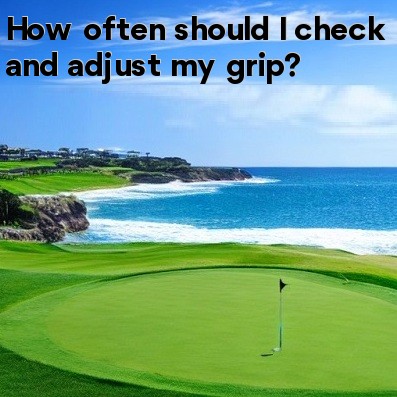
In Golf, How Often Should I Check and Adjust My Grip?
One of the fundamental aspects of playing golf is having a proper grip on the club. Your grip directly influences the control and accuracy of your shots, making it essential to ensure that it is correct. Many golfers, especially beginners, often overlook the importance of regularly checking and adjusting their grip. In this article, we will explore how often you should review and modify your grip to improve your overall performance on the golf course.
The Initial Grip
When starting out in golf, it is crucial to learn the correct grip from the beginning. Take the time to understand and practice the basic grip technique, which involves properly positioning your hands on the club. The most common grip is the overlapping grip, where the pinky finger of the trailing hand rests in the gap between the index and middle finger of the lead hand. Another popular option is the interlocking grip, where the same pinky finger interlocks with the index finger of the lead hand.
Checking and Adjusting Regularly
Once you have mastered the initial grip, it is important to continuously monitor and adjust it as needed. Many professional golfers recommend checking your grip before every round and even before every shot. While this level of scrutiny might be excessive for some recreational players, it is advisable to make regular grip checks to maintain consistency and correct any changes that might occur over time.
- When experiencing discomfort or pain: If you notice any discomfort or pain in your hands or wrists during or after playing, it is a sign that your grip might be causing unnecessary strain. In such cases, it is essential to assess your grip and possibly make adjustments to relieve the discomfort.
- When facing consistency issues: If you find that your shots are consistently going in the wrong direction or not achieving the desired distance, it could be a result of an improper grip. Reviewing your grip and experimenting with adjustments might help rectify the issue.
- When losing club control: A slipping or twisting club during your swing can be a clear indication that your grip needs attention. Regularly checking your grip can help you avoid losing control and hitting wayward shots due to a loose grip.
- When switching clubs: Different clubs, such as drivers, irons, and wedges, require slightly adjusted grips due to variations in club length, loft, and purpose. Ensure you adapt your grip to maximize control and performance with each club.
Seeking Professional Advice
If you are unsure about your grip or experiencing persistent issues, it is recommended to seek professional guidance from a golf instructor or club fitter. These experts can analyze your grip and provide personalized advice and adjustments based on your individual swing characteristics.
In conclusion, regularly checking and adjusting your grip is crucial to maintain consistency, control, and comfort in your golf game. By paying attention to your grip, especially when experiencing discomfort, consistency issues, loss of club control, or when switching clubs, you can optimize your performance on the golf course. Remember, seeking professional advice when necessary can also greatly benefit your grip and overall game.





